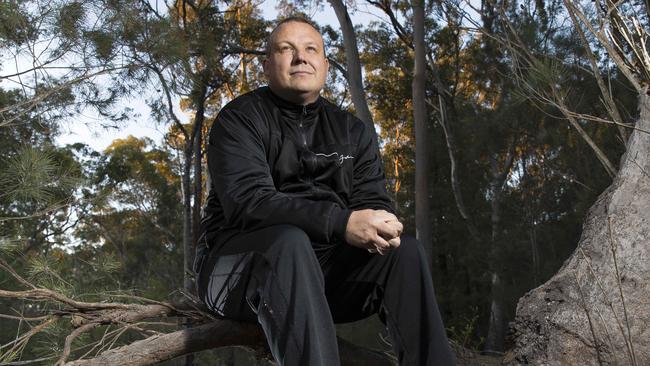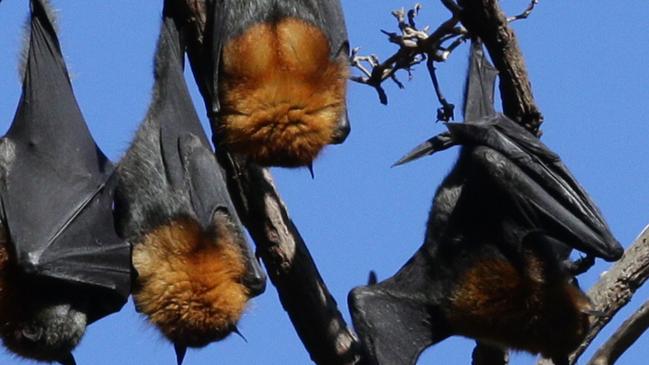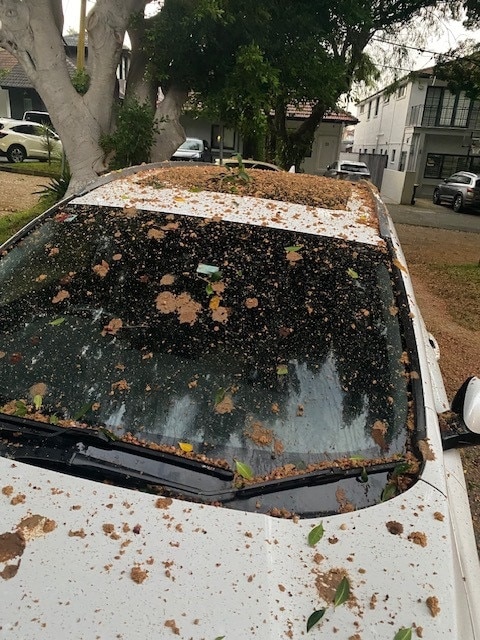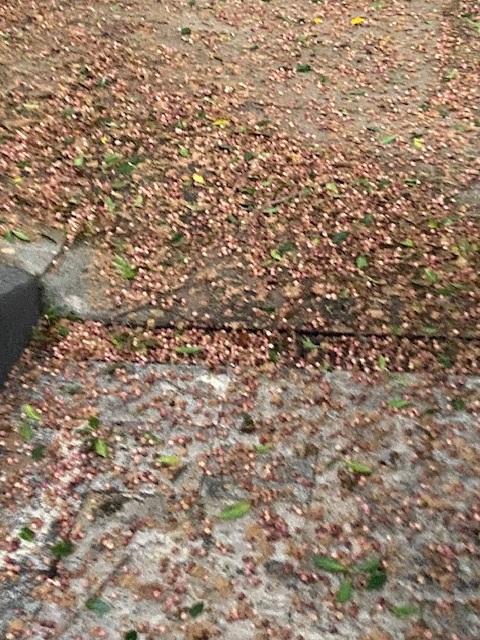Council divides opinions over sprinkler plan to deter flying fox colony as communities grapple with noise, poo problems
A council plan to use sprinklers to deter noisy bats gathering close to homes has divided opinions with one prominent wildlife rescuer declaring humans – not flying foxes – are the ones in ‘plague proportions’.
Local
Don't miss out on the headlines from Local. Followed categories will be added to My News.
A Sydney council has copped a spray over plans to use sprinklers to stop flying foxes roosting too close to homes with a prominent eco-warrior declaring humans – not flying foxes – are the ones in ‘plague proportions’.
Campbelltown Council has signed off on a proposal to deploy sprinklers as a mitigation measure to address a growing colony of grey-headed flying-foxes roosting in trees near properties in the Redfern Creek area at Macquarie Fields.
The move is in response to residents complaints about raucous bat noise and large quantities of bat droppings that leave residents having to regularly hose down their cars, homes and driveways.
The $120,000 council plan includes removing weeds and installing sprinklers on six metre tall posts to create a “buffer zone” aimed at deterring flying foxes roosting too close to nearby properties.

According to the council the measures are aimed at striking a balance between concerns raised by residents while managing the habitat of the threatened species.
But local wildlife rescuer, Ricardo Lonza, a prominent koala conservationist and former local citizen of the year, has hit out at the plan – arguing the mitigation measures should be aimed at reducing the impacts of humans.
“I believe the sprinkler systems should be facing towards the humans to make a buffer zone to spray them when they get too close to the flying foxes instead of deterring a protecting species from doing what’s natural,” he said.

“Residents complain about these very important species being near their homes but the reason these flying foxes are near homes is because humans have destroyed their habitat which has brought flying foxes closer to suburbia
“People say flying foxes are in plague proportions, but in fact humans are in plague proportions and are doing more destruction to our planet than the flying foxes are.”
The council’s mitigation plan comes as communities across other parts of Sydney grapple with ways of dealing with burgeoning bat colonies.

In the city’s east, residents in Rose Bay and Bronte have been lobbying Woollahra Council to take action to address a colony of flying foxes roosting in fig trees near their homes.
Large flying fox camps are also found in suburbs such as Balgowlah, Windsor, Parramatta, Hunters Hill, Wolli Creek, Emu Plains and Avalon.
Rose Bay local Leslie Pozniak said his wife “almost broke her knee” after slipping on bat droppings in the front yard of their home.
“The problem is the tree greatly overhangs our property so when the flying foxes come and eat the fruit in the morning we’re left with ankle deep bat poo,” he said.


“Every morning I have to spend close to an hour hosing my property so I can get out without treading on it. “
On the upper north shore, Ku-ring-gai Council has introduced mitigation measures including a mental health assistance program to support residents during peak periods of bat noise in Gordon.
Bronte resident Ryan Kassel said bats also cause major noise disturbances.
“We’ve got literally black rings under our eyes from not sleeping because of the excessive noise of the bats,” he said.
“I appreciate we need to live in an ecosystem but to be honest I feel like the priority is on the bats and the trees rather than residents.”
In a statement, the NSW Department of Environment and Heritage said the effectiveness of sprinkler systems as a bat mitigation strategy “is currently unclear” but “encourages active monitoring” of the measures.
Mr Lonza said the flying foxes play an important role in the ecosystem including as a pollinator.
Campbelltown councillor Karen Hunt supported the council’s mitigation strategy
“This colony was very small originally but it has increased in numbers drastically over the years,” she said.





